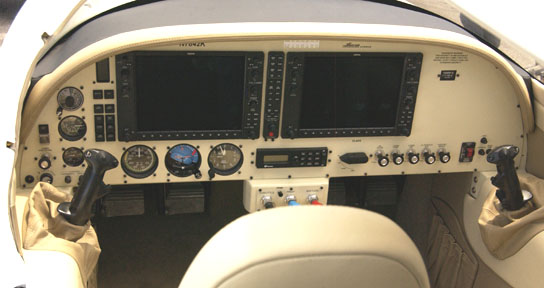I am an
electrical engineer, and have designed and often personally written operating
system software for low volume commercial systems since 1979. I am
occasionally amazed at the latent software bugs we've found after a product
has been in service for years and years.
We beat systems to death in
systems testing (or so we believe) -- and still bugs are later found. It
is not through any lack of intelligence, state of the art design and
development practices, good will, or effort. This was true when I worked
at Bell Laboratories. It was true when I worked at Microsoft. It
was true when NASA lost a $125M Mars orbiter 286 days into its mission because
some engineers were thinking in feet and others were thinking in
meters.
My plane has a G900X...an experimental version of the Garmin
G1000. I have a lot of confidence in Garmin, and take some comfort in
knowing the hardware is "essentially" the same as Garmin's relatively high
volume commercial product. The software is a derivation of their
commercial line, too. I bet Garmin's product design, development, and
testing procedures at least rival any other supplier to the general aviation
marketplace. My G900X has performed flawlessly for over 650 hours in my
plane.
And yet, Garmin has software bugs that slip through the
cracks. Heck, their current G1000 software has a service bulletin
(#1156) indicating there may be a loss of attitude and heading for up to 45
seconds during sustained bank turns in northern latitudes. Or how about
the service bulletin (#1118) indicating possible autopilot disconnection or
uncommanded pitch changes when sorting flight plans...
A backup
instrument, which may be my final "get out of jail free" option, that is
almost entirely software-based? Not me.
Even if the software
"doesn't have any bugs" (!!!), I really don't believe any low volume,
relatively low budget, engineering shop (i.e. 99% of GA suppliers) does this
kind of system testing (thanks for the link, Brent):
http://www.youtube.com/watch?v=rDvkZUjBJRw
Even after those impressive
tests, I'm willing to bet anything that Cobham is *still* finding latent bugs
in their EFIS!
If aesthetics are an issue, IMHO a good looking
feature-rich EFIS panel can be made even while incorporating steam
gauges:

I just
don't see any reason to fool around when lives really are at stake.
Having said all that, I acknowledge that almost everything contains at least
some software, and I admit my backup (spinning mass) AI is
electric.
-isaac
N7842K